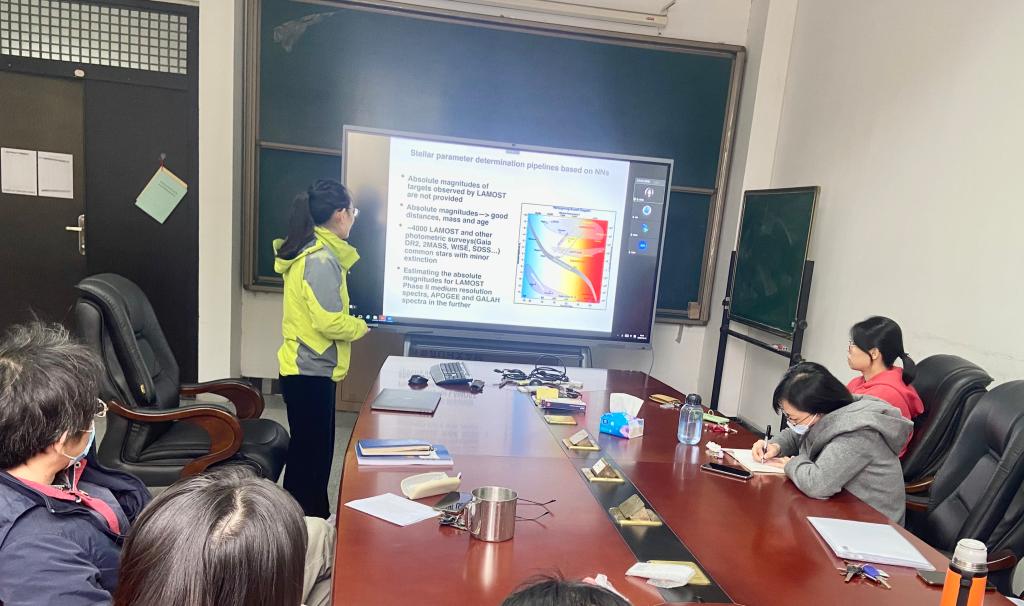
We had a visitor, Dr. Chun Wang (王春), from the Kavli Institute for Astronomy and Astrophysics, Peking University on Oct. 14th. Dr Wang presented her work on 'A chemodynamical evolution study of the Galactic disc based on the LAMOST spectroscopic survey data'.
The chemodynamical evolution of the Galactic disc(s) is among the hottest debating issues of the Galactic astronomy. An archaeological approach to the problems relies on the collection of information in multidimensional phase space for large samples of stars. The LAMOST Galactic Spectroscopic survey have collected millions of stellar spectra. We estimate stellar atmospheric parameters Teff, log g, MV and MKs, [Fe/H] ([M/H]), [α/Fe] ([α/M]), age from LAMOST spectra with KPCA, DDPayne and Deep Learning methods. Based on the stellar parameters, we build up several useful stellar samples in order to investigate the chemodynamical evolution of the Galactic disc. Using the sample selected from the main-sequence turn-off and sub-giant (MSTO-SG) stars targeted by the LAMOST Galactic Spectroscopic surveys, we have investigated the metallicity distributions of mono-age stellar populations across the disc of 6 < R < 12 kpc and |Z| < 2 kpc. We also study the chemical tomography of the Galactic disc in 7 < R < 12 kpc and |Z| < 3 kpc using a large sample of over seven hundred thousand red giant branch (RGB) stars from the LAMOST Galactic surveys. The Galactic disc phase spirals at different Galactic positions are also revealed by Gaia and LAMOST data. These works have provided strong constrains on the Galactic disc formation and evolution models.
 目的地搜索
目的地搜索